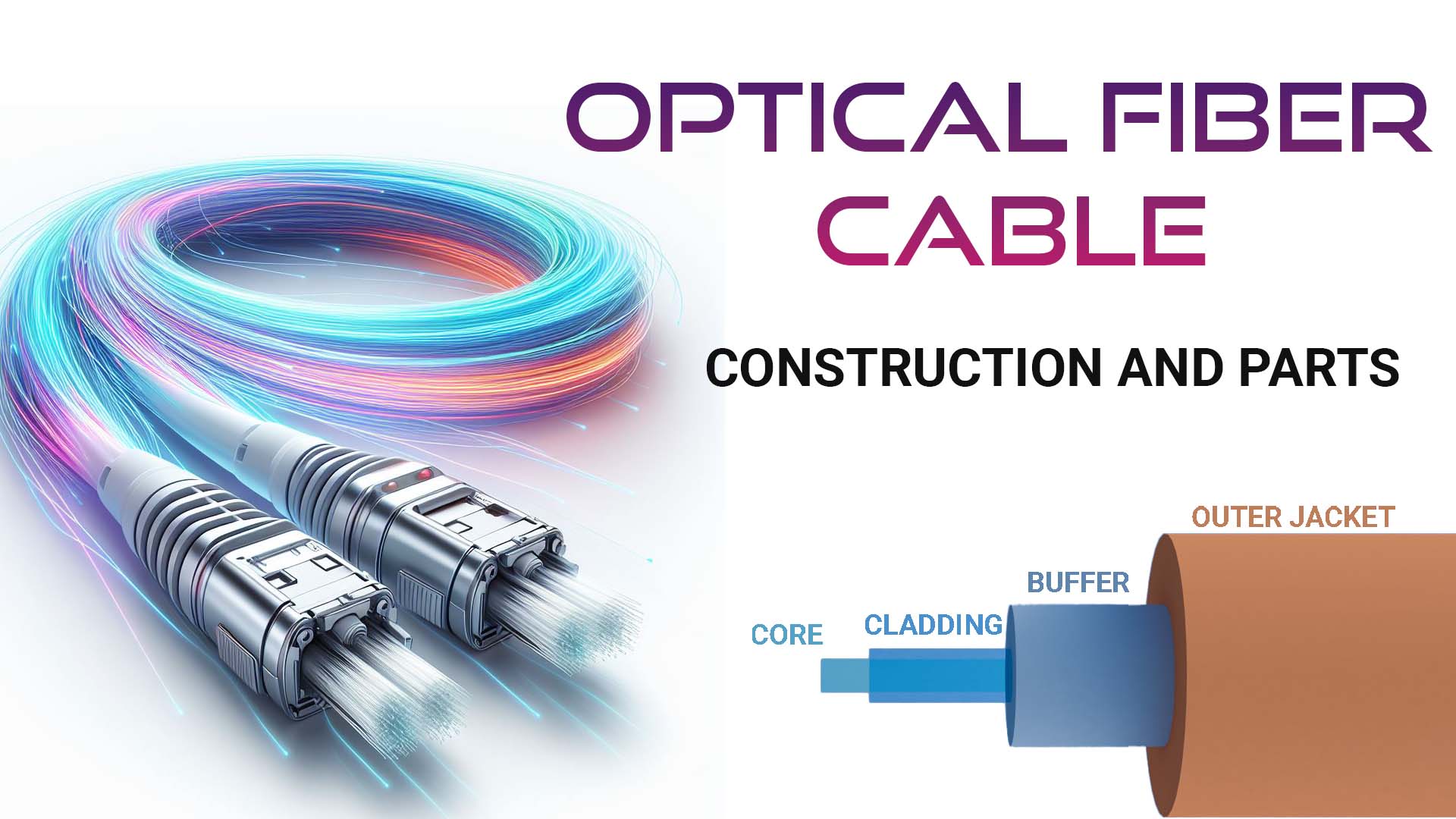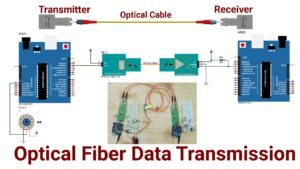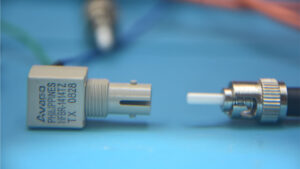Introduction
In this post, we will discuss what an optical fiber cable is and its construction. In the previous posts, we discussed what optical fiber communication is, how it works, and the fundamentals of light.
Introduction to Optical Fiber Cable:
An optical Fiber cable is a flexible, transparent Fiber made by glass or plastic to a diameter slightly thicker than that of a human hair. Optical fiber cable are used most often as a means to transmit light between the two ends of the Fiber cable and find wide usage in Fiber-optic communications, where they permit transmission over longer distances and at higher bandwidths (data rates) than electrical cables.

Advantages Over Metal Wires:
Fibers are used instead of metal wires because signals travel along them with less loss; in addition, fibers are immune to electromagnetic interference, a problem from which metal wires suffer excessively.
Historical Development and Morse Code Transmission:
The first type of Fiber optic cable was developed in 1880s by George W. Burr and was used to send Morse code to communicate across transatlantic cables. Today, optical fibers are commonly used to transmit information between two locations on earth and they can reach transmission speeds up to 40 gigabytes per second.
The Construction of Optical Fiber Cable
Structure of Optical Fiber Cable:
Optical fibers are composed of a core and a cladding, both of which are typically made from a transparent glass or plastic medium. The core is the component through which the light signals travel, and it is typically smaller in diameter than the cladding. The cladding acts as a barrier to prevent the light from exiting the core and focuses it within the core. This combination of core and cladding creates an optical Fiber that can carry information in the form of light over long distances with minimal signal loss.
Manufacturing Process:
The construction of an optical Fiber cable begins with the manufacturing of the core and cladding. The core is made by drawing a glass rod through a furnace, which heats the glass to its melting point. The cladding is made in a similar way, but with a material that has a lower index of refraction.
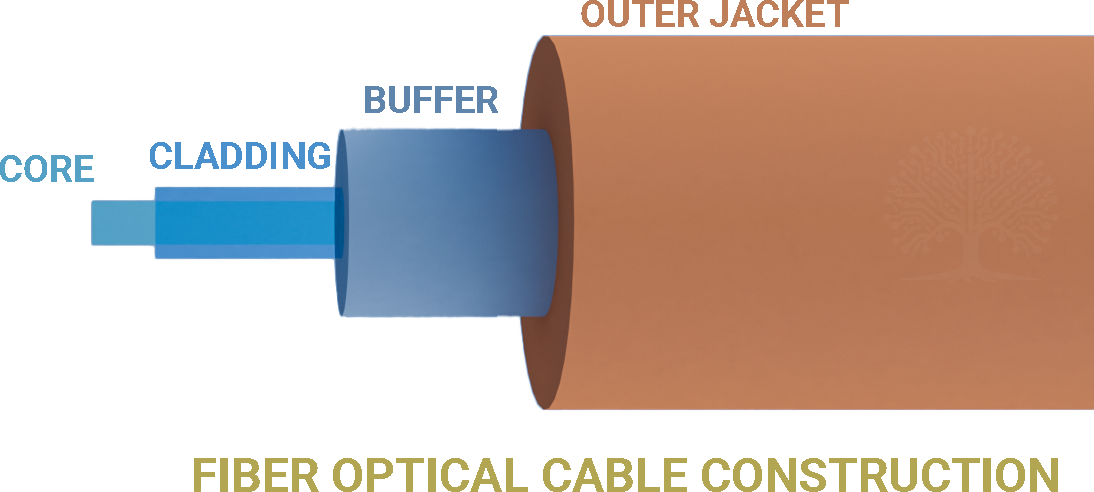
Protection and Reinforcement of Optical Fiber Cable:
Once the core and cladding are made, they are joined together and the cable is formed. The cable is then coated with buffer (a material that helps to protect it from damage). It is designed to absorb shocks, prevent excessive bending and reinforce the fiber cable. A final layer of protection (outer jacket or cable jacket) for the further strengthens the cable. The jacket is color coded to identify the type of optical fiber in the cable: yellow for single mode, orange for multimode, and so on.
Types of Optical Fiber Cables
There are two types optical fiber cables, single mode and multimode. The main difference between them is the ability to carry more bandwidth.
Single Mode Fiber Cables
Single mode cables are able to carry more bandwidth over longer distances. This makes them ideal for long-distance connections such as backbone networks, undersea cables, and deep space connections. Single mode cables have a diameter of 8 microns which can support data rates up to 10 gigabits per second (Gbps).

Multimode Fiber Cables:
Multimode cables are able to transfer data at a rate of up to 1 Gbps over shorter distances; they have a larger core size which allows more information flow but not over long distances.
Light Paths in Optical Fiber:
In single mode fiber, light follows a single path through the core of the optical fiber cable. This path is called a mode. Multimode fiber, on the other hand, supports multiple modes of light travel. In multimode fiber, light is split into multiple paths, or modes, as it travels through the core of the optical fiber.
Core Size Difference:
The main contrast between single mode and multimode fiber is the size of their cores. Single mode fiber has a smaller core, while multimode fiber has a larger core that enables multiple modes of light travel.
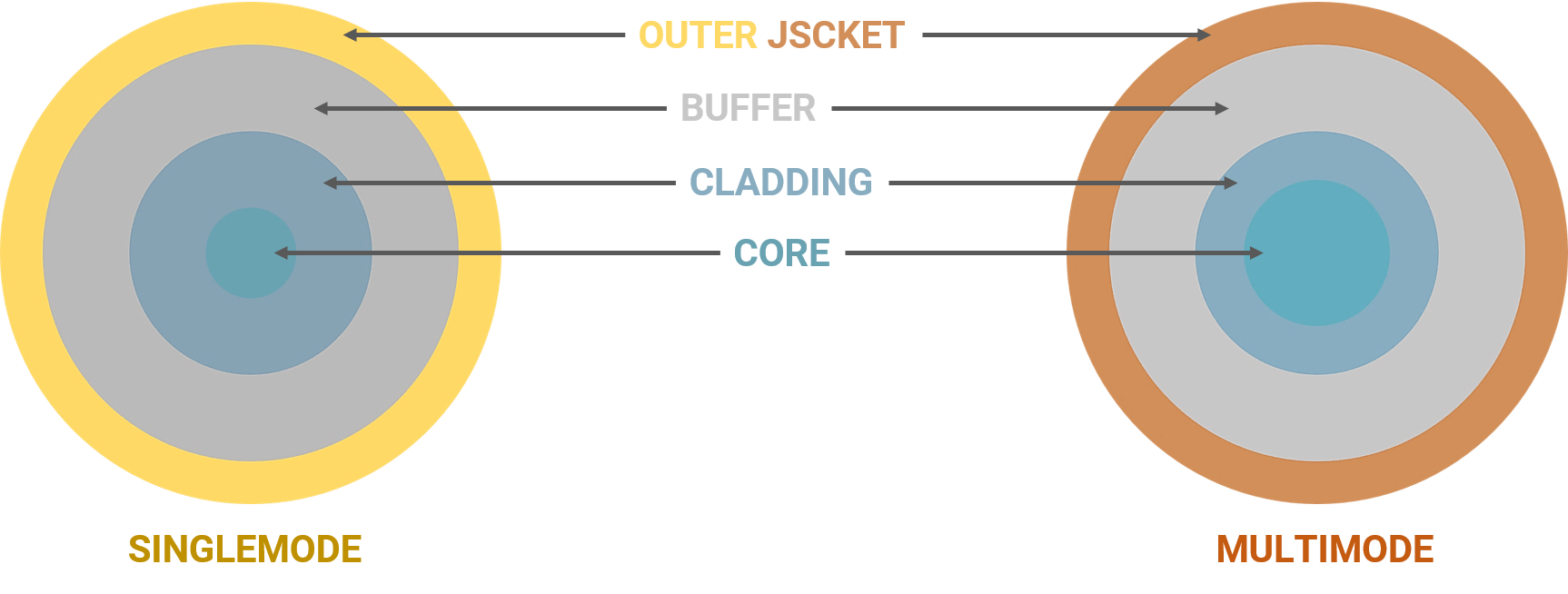
Video Guide
Checkout: Full Video Guide on How Optical Transmission Works and How you Transmit Data with Arduino via Optical Fiber Transmission.
You Can Also Download the Optical Fiber Simulation Model Library for Proteus.
